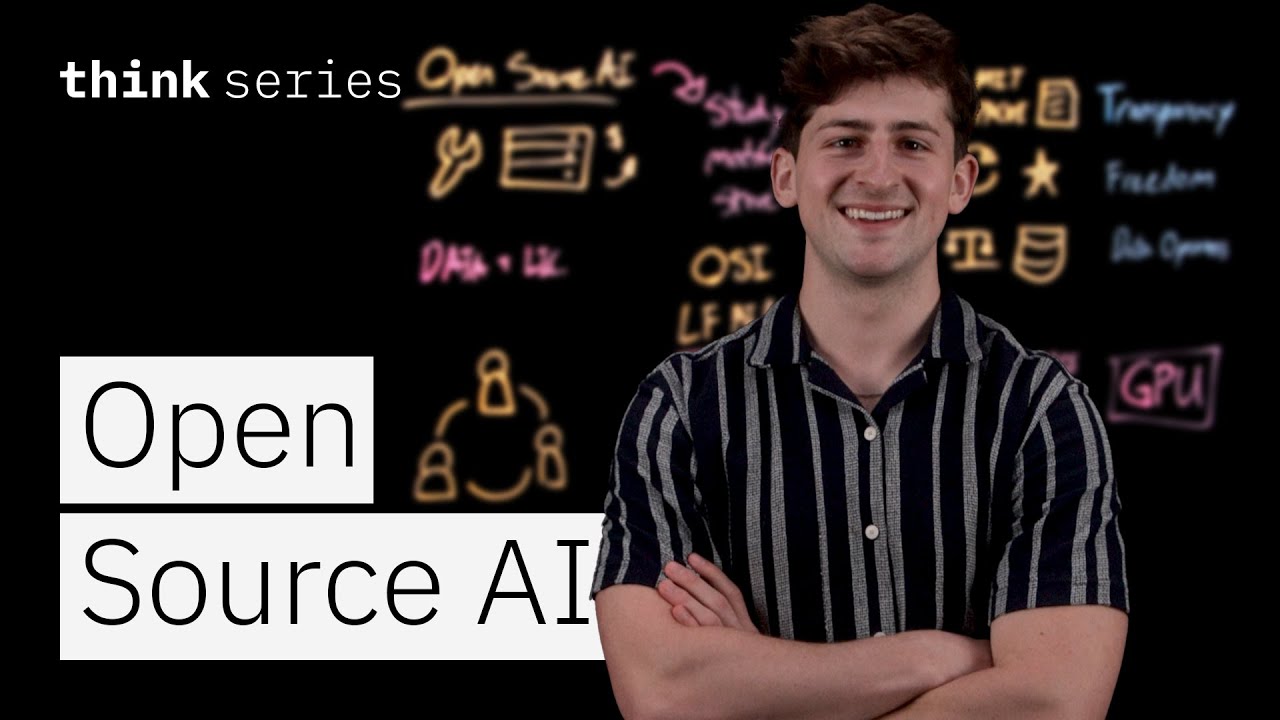The video explains that open source AI is centered on transparency, freedom, and data openness, allowing users to access, modify, and share models to foster innovation and collaboration. Despite challenges like limited access and resource requirements, open source AI promotes ethical development and customization, with frameworks available to evaluate and ensure model openness and fairness.
The video explains what open source AI truly means, emphasizing its core principles of transparency, freedom, and data openness. It highlights the vast ecosystem of open source models, with over a million available on platforms like Hugging Face, and discusses how these models can be fine-tuned and customized for various use cases. Open source AI allows users to run models on their own hardware, reducing costs and increasing efficiency, much like open source software in general. The video underscores the collaborative potential of open source AI, where teams across different regions can develop, share, and improve models for real-world applications.
Open source AI involves sharing not just the source code but also model architectures, parameters, weights, and sometimes training data. This openness enables users to study, modify, and redistribute models, fostering innovation and customization. Several organizations, such as the Open Source Initiative and the Linux Foundation’s AI and Data Foundation, define criteria for what qualifies as open source AI. The key components of this definition include transparency, freedom, and data openness, which collectively ensure that models are accessible, modifiable, and ethically transparent.
Transparency in open source AI means that source code must be accessible under open licenses like MIT or Apache, and there should be clarity about the methodologies used, including how training data was produced. Freedom refers to users’ rights to use, study, modify, and share models without restrictions, including access to model weights for fine-tuning and contribution. Data openness is crucial for assessing bias and fairness, requiring detailed information about training datasets, labeling, and processing techniques to ensure models are ethically sound and unbiased.
Despite its benefits, open source AI faces challenges, particularly around defining what constitutes true openness. Many models only provide limited access, such as API endpoints or weights, without full source code or training data disclosures, often due to legal, ethical, or proprietary reasons. Additionally, training large models demands significant computational resources, creating barriers for smaller contributors. These limitations can hinder full transparency but do not diminish the value of open source AI for experimentation, customization, and organizational flexibility.
The video concludes by advising viewers to evaluate models using frameworks like the Linux Foundation’s Model Openness Framework and to create an AI bill of materials for transparency. It stresses the importance of validating models for accuracy and fairness before deployment. While open source AI is complex and nuanced, its goal is to promote collaboration, transparency, and trust in AI systems. The presenter encourages viewers to engage with the topic, ask questions, and stay informed about developments in open source AI.
